Do you struggle with trying to take pictures outside? Are you always fighting against the sun or the shadows? Or maybe you just can’t seem to get that perfect shot.
There are a few things to consider when trying to determine the best time of day to take pictures outside:
- The first is the direction of the sun. If you are taking pictures during the daytime, you want to make sure that the sun is not in your eyes;
- The second thing to consider is the shadows. If you are taking pictures of people, you don’t want their faces to be shadowed;
A few experts will talk about the different times of day and what works best for each type of photo. So whether you are a professional photographer or just someone who likes to take pictures for fun, this blog post is for you!
What And When Is “Golden Hour” To Shoot Pictures Outside?
There’s a little-known trick to achieving that ideal, fantastic, and flattering lighting in photographs outside. Much of it is due to when the images are taken. The “golden hour” is the period of time before and after the sun sets on a clear day. This is known as one hour before or after the sun rises or sets.
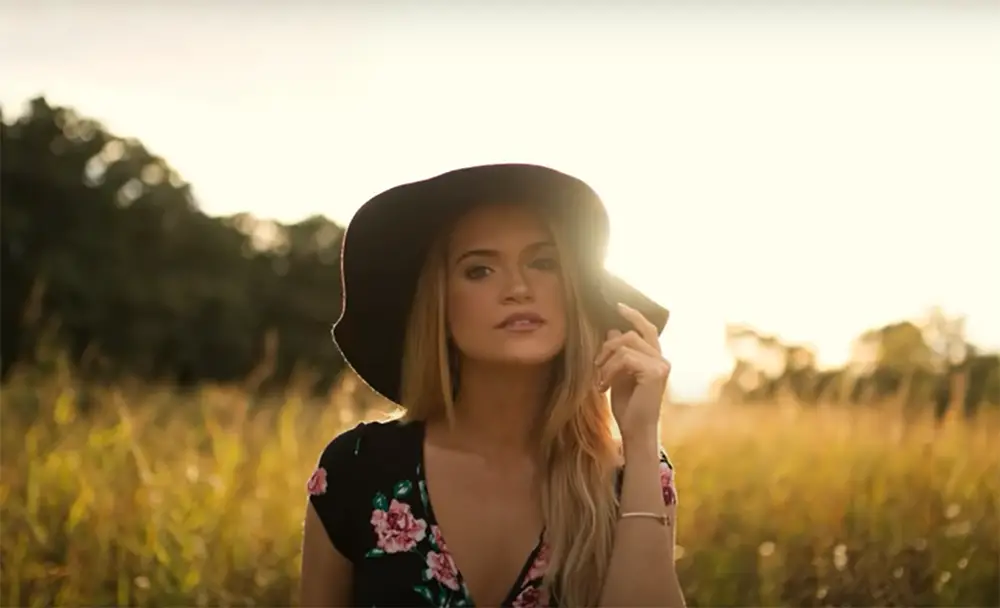
The light is softer and more diffuse during this time, which creates a better environment for pictures. The sun is also lower in the sky, which can result in some interesting shadows.
The “golden hour” varies depending on the time of day and the weather. It necessitates clear, sunny skies with few to no clouds, as well as a location where the sun can shine through or peek between trees and buildings. Overcast days or heavily shaded locations will give a significantly different aesthetic than golden hour light [1].
1) Warm light
The “golden hour” gets its name from the warm, golden color of the light during this time. This is due to the sun being lower in the sky and its rays having to travel through more atmosphere. The light is also less direct, which creates a softer light.
All of these factors result in a more flattering and pleasant light for pictures. The colors are also richer and more saturated during the “golden hour”.
2) The “golden hour” lighting is ideal for portraits
One of the best times to take outdoor portraits is during the “golden hour”. The flattering light can make anyone look their best. The warm tones are also great for skin tones, making them appear more natural.
The “golden hour” is also a great time to shoot landscapes. The low sun creates long shadows and can add depth and dimension to your shots. The rich colors are beautiful and can really make your images pop.
3) Shooting during the “golden hour” and using lighting patterns
There are a few things to keep in mind when shooting during the “golden hour”:
- First, the light is constantly changing, so you’ll need to be quick. The best light only lasts for a short period of time;
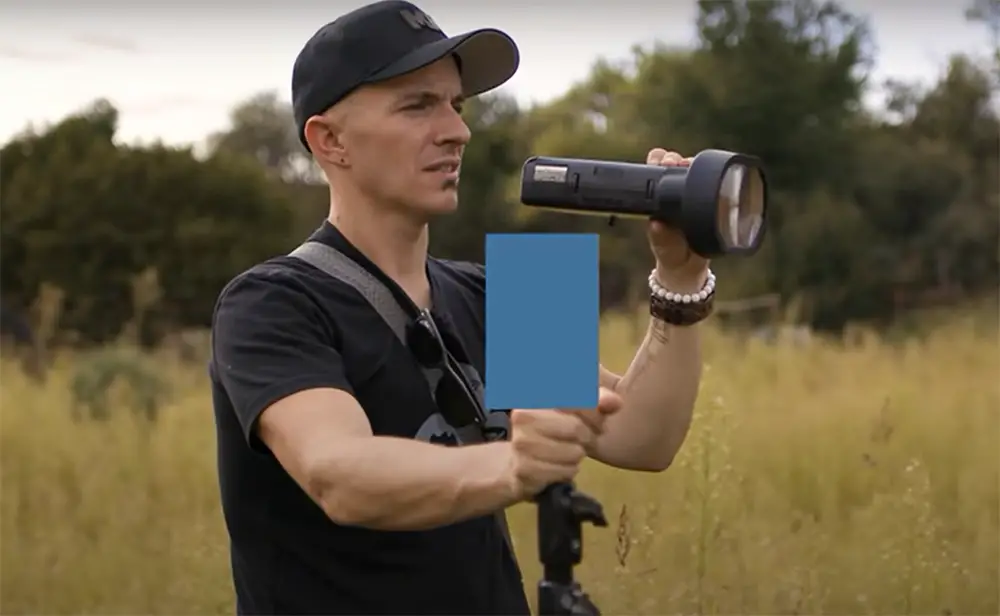
- Second, the light is very directional. This means that you’ll need to pay attention to where the sun is in relation to your subject. You can use the sun to create interesting lighting patterns and shadows;
- Third, the “golden hour” is often a very busy time for photographers. Everyone wants to take advantage of the beautiful light, so you may have to fight for your spot;
- Finally, don’t forget that the “golden hour” doesn’t last forever. Once the sun sets (or rises), the light will change and you’ll need to adjust your settings accordingly;
The “golden hour” is a great time for pictures because:
- The light is softer and more diffuse;
- The sun is lower in the sky;
- The colors are richer and more saturated;
- It’s a great time for portraits;
- The low sun creates long shadows;
- The rich colors are beautiful;
4) Challenges of shooting during the “golden hour”
It’s true that “golden hour” is the most controlled moment to shoot, but it doesn’t mean it’s a piece of cake (well, you might be walking in a park). It still necessitates an understanding of directional light and attentive composition.
When the subject is too strongly backlit, it may become lost in the shot and a lack of contrast will cause this. If you aren’t metering correctly, strong backlighting might confuse your camera’s light meter, causing underexposure of your subject.
The “golden hour” lighting also creates long shadows. These can be used to your advantage to create interesting compositions and leading lines. However, if you’re not careful, the shadows can overwhelm your subject.
When the sun is still too bright and direct, outdoor light fixtures can be harsh and cause squinting or burning skin color. Consider going inside until the light fades.
While a little bit of lens flare may be acceptable, too much lens flare can occur if bright light enters your camera lens from an angle. This will result in a hazy or entirely out-of-focus image, or colorful artifacts in the photo, especially with entry-level lenses. Using a lens hood and adjusting your shot composition might help prevent this [2].
What is “Blue Hour” in Photography?
Landscape photographers consider the “blue hour” to be one of the most favorable shooting situations, as it is for all types of photographers. The sky will be tinged with cool blue hues during the blue hour [3].
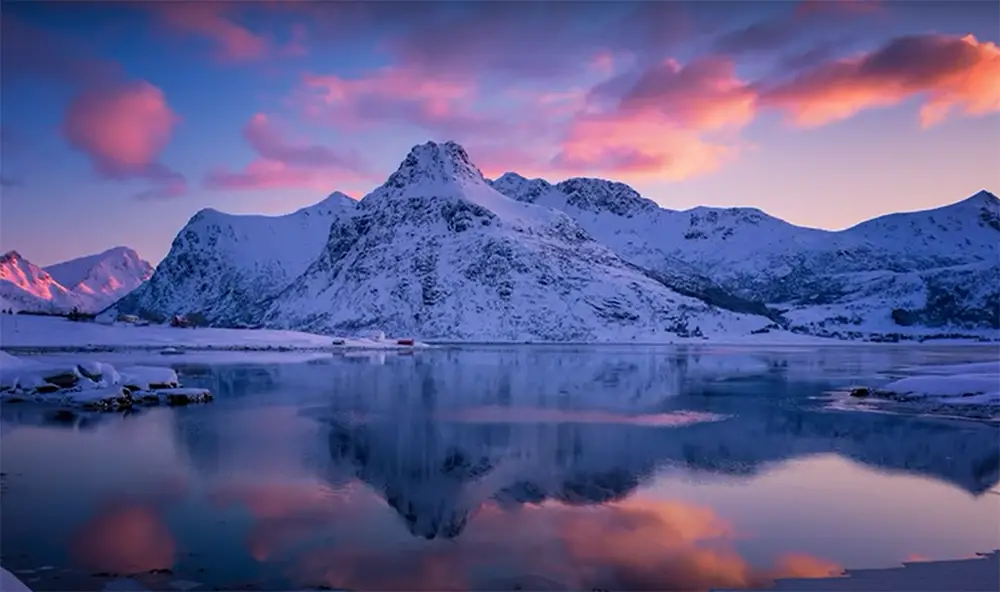
The background light is mild and diffuse, producing aesthetically pleasing images. In urban areas, the blue hour may be very appealing.
Street lights, buildings, and automobile headlights all contribute to the visual beauty of photography.
Sunrise and Morning Portraits
Sunrise and sunset are sometimes regarded as the same, but there are several important distinctions between them.
As the earth rotates beneath us, the heat is gradually drawn away from the planet. When all of the light has vanished from above, the ground cools and darkness enfolds us. The atmosphere becomes humid as moisture condenses on the surface and may form dew or even ice in some cases.
For many people, the morning is the best time of day. The air is fresh and invigorating, and the sun is just beginning to warm things up.
If you’re planning on taking pictures of people outdoors, sunrise or morning portraits are a great option. The light is softer and more flattering at this time of day.
People are generally more relaxed in the morning, too. They haven’t been bombarded with work tasks or errands yet, so they’re more likely to be in a good mood for photos.
Before the sun warms the ground and this moisture evaporates, there is a brief period before sunrise when condensation may be captured reflecting in the new light, like gems sparkling in the distance.
The time of day may also have an impact on the amount of sky you include in an outdoor shot. Because the earth has not yet been sufficiently heated by the sun in the morning, clouds struggle to form. It’s this ascent of air that leads to the formation of clouds in the sky [4].
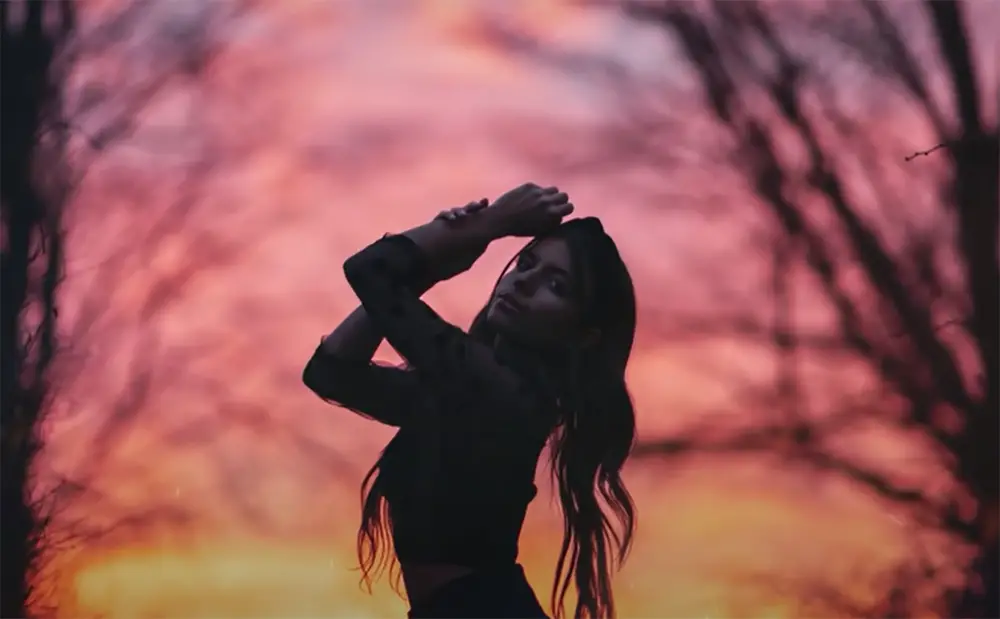
Shooting in the Middle of the Day
The middle of the day is when the sun is highest in the sky, and it casts harsh, direct light. This can be great for certain types of photos, like sports photography.
But if you’re looking to take softer, more flattering portraits or landscape shots, midday probably isn’t the best time. The light can be too harsh and create deep shadows on people’s faces. It can also make colors appear washed out in landscapes.
If you do decide to shoot in the middle of the day, try using a reflector to bounce some light back onto your subject and soften the shadows. Or experiment with shooting in partial shade to see if you can find a balance between direct and indirect light that works for your purposes.
Photographing in Evening Light
As the sun begins to dip below the horizon, the quality of light changes once again. This is often referred to as the “golden hour” because of the warm, golden hues that are cast on everything in sight.
The “golden hour” is a favorite among photographers because it’s such a beautiful time of day. The light is soft and warm, and it can make even mundane subjects look magical.
If you’re shooting portraits, the “golden hour” is an ideal time. The light will be flattering and romantic, and your subjects will probably be in a good mood after a long day.
Just like with sunrise shots, the position of the sun can affect how much sky you include in your frame. In general, you’ll want to avoid having the sun directly in your shot. But if you’re planning on including a lot of skies, evening light can be a great time to shoot.
As the sun sets, the colors in the sky change and intensify. If you want to capture this beautiful light, make sure you have your camera ready to go well before the sun actually sets.
Twilight and Night Photos
As the night draws near and the sun’s direct illumination begins to fade, we’re greeted with the “blue hour” moment, when while the scene is still affected by ambient light as it bounces across the atmosphere, the sun’s direct light has vanished.
The entire area is now in shade, so it has a lower color temperature (measured in Kelvins) and appears bluer.
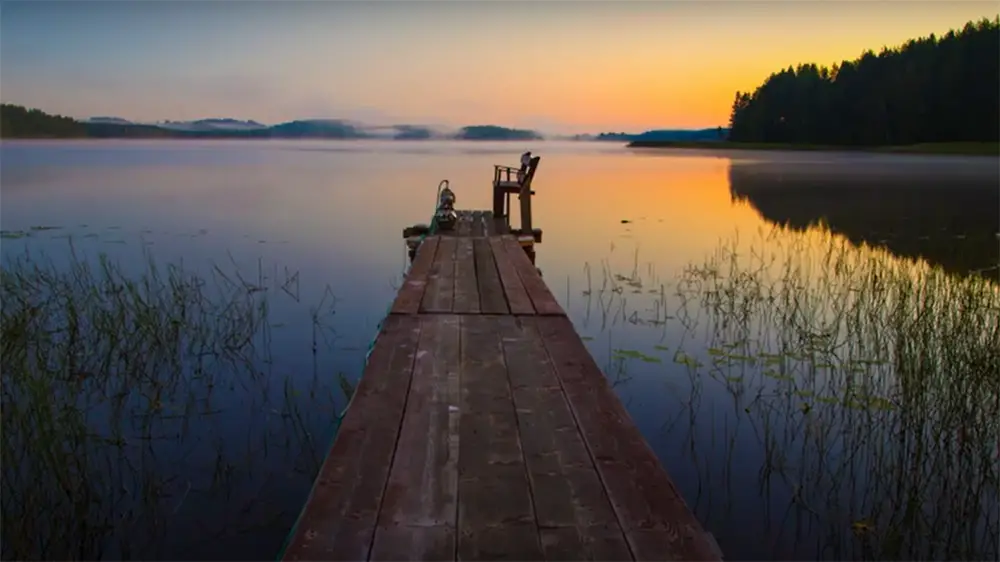
When the light gets low, it’s a good idea to adjust camera settings to compensate. A shallower depth of field can be achieved by using a larger aperture, which will brighten the image. If the depth of field needs to be kept constant, we may adjust the ISO sensitivity or shutter speed to lighten the exposure.
The higher the ISO sensitivity is set, the more image noise will be produced, so we want to keep it as low as possible.
If you need to use a faster shutter speed, experts may need to use a tripod to stabilize the camera and prevent blurring.
With long exposures in low light, it’s also important to be aware of camera shake. This can be caused by simply pressing the shutter button, so consider using a remote shutter release or self-timer to avoid this issue.
A longer shutter speed exposes the image sensor to light for a longer period of time.
However, by capturing motion deliberately, such as traffic lines or intentional camera movement when combined with a burst of flash to freeze the subject in the foreground, we may take advantage of this [5].
The Best Time of Day to Take Pictures Outside
When taking pictures outside, the time of day can greatly affect the quality of your photos. To help you determine the best time to capture the perfect shot, we have compiled a table comparing various indicators at different times of day.
| Time of Day | Lighting | Color Temperature | Shadows | Sun Angle |
|---|---|---|---|---|
| Morning (6am – 9am) | Soft, diffused light | Cool (5500K – 7000K) | Long shadows | Low angle |
| Midday (12pm – 3pm) | Harsh, direct light | Neutral (5000K – 5500K) | No shadows | High angle |
| Afternoon (3pm – 6pm) | Soft, warm light | Warm (4000K – 5000K) | Long shadows | Low angle |
| Golden Hour (1 hour before sunset) | Soft, warm light | Warm (2500K – 4000K) | Longest shadows | Lowest angle |
| Blue Hour (1 hour after sunset) | Cool, diffused light | Cool (2000K – 3000K) | No shadows | N/A |
This table compares four different times of day for taking outdoor photos based on various indicators. The morning provides soft, diffused light with cool color temperature, long shadows, and a low sun angle. Midday offers harsh, direct light with neutral color temperature, no shadows, and a high sun angle. The afternoon offers soft, warm light with warm color temperature, long shadows, and a low sun angle. The golden hour provides the softest, warmest light with the warmest color temperature, the longest shadows, and the lowest sun angle. The blue hour provides cool, diffused light with cool color temperature and no shadows. Use this table as a guide to determine the best time of day to take outdoor photos based on your desired lighting and effect.
FAQ
What if I have to shoot photos mid-day?
The light is usually harshest around noon, so if you can avoid shooting then, do. If you can’t, look for shady areas to place your subject in order to avoid harsh shadows on their face. You might also consider using a reflector to bounce some light back onto your subject’s face.
If you’re stuck taking pictures during the middle of the day, try to find shady areas to take advantage of softer lighting. Alternatively, use a reflector to bounce light back onto your subject’s face. This will help fill in any harsh shadows that might be present.
What’s the best time to take pictures outside in summer and spring?
Early morning and late afternoon are still the best times to take pictures, but you have a little more wiggle room in summer and spring. The sun rises earlier and sets later, so you can get away with shooting a little later in the day. Just make sure to avoid the harsh midday light!
In general, the best time of day to take pictures outside is early morning or late afternoon. However, during the summer and spring months, you have a bit more flexibility since the sun rises earlier and sets later. Just be careful to avoid taking pictures during the harsh midday light!
If you’re shooting outdoors during summer or spring, try to stick to the early morning or late afternoon hours. This will help avoid harsh shadows from the midday sun.
What’s the best time to shoot outside during the fall season?
The ideal time to shoot outside during the fall season is first light. Sunrise provides good lighting for fall hues. In addition, the cold nights produce early morning mist, which is excellent for photographs. You may produce a beautiful composition out of fog over water or dense vapor swirling in the air [6].
What’s the best time to take portraits outside?
The “golden hour” is the best time to snap photos outside, which is between sunrise and sunset. You may still produce lovely photographs at other times.
What is overcast lighting?
The overcast lighting is when the sky is mostly covered in clouds, diffusing the sunlight and creating a softer light. This type of lighting is great for portraits because it eliminates harsh shadows and can make your subject look more flattering [7].
What are some tips for taking great photos outdoors?
The time of day makes a big difference in the quality of light, so plan accordingly. The “Golden Hour” – the hour just after sunrise and the hour before sunset – is when the sunlight is at its warmest and most flattering. If you can, try to take your photos during these times.
Overcast days also produce great lighting for outdoor photography. The diffuse light eliminates harsh shadows, so it’s ideal for portraits. And if there’s a chance of rain, don’t cancel your photo session! Wet weather can create some really stunning effects.
Finally, pay attention to your background. A busy or cluttered background will distract from your subject, so look for a clean, simple backdrop. A beautiful landscape can make a great backdrop for your photos, but make sure the focus is still on your subject.
How do you adjust your camera settings depending on the time of day?
If you’re shooting during the Golden Hour, you’ll want to set your camera to a lower ISO so that your photos don’t come out too grainy. A higher aperture (or f-stop) will also help to capture more light and produce a nice, soft background.
For overcast days or rainy weather, you may need to increase your ISO slightly so that your photos don’t come out too dark. And if there’s a lot of contrast in your scene (for example, if you’re photographing someone against a bright sky), you can use exposure compensation to avoid blowing out the highlights.
How do you take pictures outside in the sun?
When shooting outdoors, the best time of day to do so is in the early morning or late afternoon, when the sun is low on the horizon and the light is softer. If you’re taking pictures of people, try to position them so that they’re not facing directly into the sun.
Another option is to use a reflector to bounce sunlight back onto your subject. This can help fill in shadows and give your subject a nice, even light.
Finally, don’t forget about using sunscreen! The sun can be harsh on your skin, so be sure to protect yourself (and your subjects) from its harmful rays.
When taking outdoor pictures where should the sun be?
The best time of day to take pictures outside is in the morning or evening, when the sun is low in the sky. This will give your photos a softer, more flattering light. The midday sun can create harsh shadows and squinty eyes, so it’s best to avoid taking pictures then if you can help it. Keep this in mind next time you’re planning to snap some shots outdoors!
Is 4pm a good time to take photos?
The answer to this question depends on a few factors, including the time of year and the weather. In general, the best time to take pictures outside is during the golden hour. The golden hour is the first hour after sunrise or the last hour before sunset. During this time, the sun is lower in the sky and casts a softer, more flattering light. This makes for beautiful photos!
However, if you’re taking pictures during summertime, you may want to avoid taking them during midday when the sun is at its strongest. The harsh midday light can create unflattering shadows and make colors appear washed out. Instead, try taking pictures early in the morning or late in the evening when the light is softer.
What is the best time of day to take senior pictures?
This is a great question and the answer may surprise you. The best time of day to take senior pictures is actually an hour or two before sunset. This is because the sun is not too high in the sky, which can create harsh shadows on your face. The light is also softer and more flattering at this time of day. So, if you’re looking for the best time of day to take senior pictures, be sure to schedule them an hour or two before sunset!
How do you prevent outdoor shadows from photography?
The best time of day to take pictures outside is during the Golden Hour. The Golden Hour is the first hour after sunrise and the last hour before sunset. During this time, the sun is lower in the sky and its rays are not as harsh. This results in softer light that is more flattering for portraits. If you can’t shoot during the Golden Hour, try to avoid taking pictures between noon and two pm when the sun is highest in the sky and creates harsh shadows. Instead, look for open shade under trees or awnings. These areas will provide even lighting without deep shadows.
So get up early or stay out late to make the most of natural light! And don’t forget, if you’re shooting in direct sunlight, to have your subject face the sun and use a fill flash to avoid deep shadows. With a little planning, you can get beautiful pictures no matter what time of day it is.
How can the time of day affect an outdoor photograph?
The time of day can affect an outdoor photograph in a number of ways. The most obvious is the position of the sun in the sky, which can create different shadows and lighting conditions. Another factor is the amount of cloud cover, which can change how much direct sunlight there is. Finally, temperature can also affect how comfortable you are taking pictures (and how comfortable your subjects are).
In general, the best time of day for outdoor photography is early morning or late afternoon/early evening. The light is usually softer and more flattering at these times, and there are often fewer people around to get in your shots. Of course, this will vary depending on where you are in the world and what time of year it is. So experiment and see what works best for you!
Is 10 am a good time to take pictures?
No, generally speaking, the light at that time of day is quite harsh and can create unflattering shadows. The best time to take pictures outside is around sunset or sunrise, when the light is softer and warmer. Of course, this isn’t always possible (or practical) depending on your schedule and location. If you can’t shoot at those times, try to avoid taking pictures between noon and four in the afternoon, when the sun is directly overhead.
How do you take a picture in the afternoon?
The answer is, it depends on the time of year and where you live. In the northern hemisphere, the sun is highest in the sky around noon. So if you’re taking a picture of a landscape, you’ll want to be facing south so the sun is behind you. For pictures of people, it’s usually best to take them in the morning or evening when the light is softer.
If you’re in the southern hemisphere, things are reversed. The sun is highest in the sky around noon, so if you’re taking a picture of a landscape, you’ll want to be facing north so the sun is behind you. For pictures of people, it’s usually best to take them in the morning or evening when the light is softer.
Of course, these are just general guidelines. The best time to take a picture is whenever the light looks good to you! So get out there and start taking some pictures!
What are the best camera settings for outdoor portraits?
There are a few things to consider when choosing the best camera settings for outdoor portraits. The time of day, the light, and the background are all important factors.
The time of day can make a big difference in the quality of light. Late afternoon or early evening is often the best time for taking pictures outside. The sun is not as harsh and the lighting is more flattering.
The light also plays a role in choosing the best camera settings. If it’s a bright sunny day, you’ll want to use a lower ISO setting to avoid overexposing your photos. A lower ISO will result in sharper images with less noise. Conversely, on a cloudy day you may want to bump up your ISO to make sure you’re getting enough light.
The background is also an important consideration. If you’re shooting in a busy area, you may want to use a wider aperture to blur out the background and focus on your subject. A shallow depth of field will also help to isolate your subject from their surroundings.
So, when choosing the best camera settings for outdoor portraits, be sure to take into account the time of day, the light, and the background. By doing so, you’ll be sure to capture beautiful photos that you’ll cherish for years to come.
Is sunrise or sunset better for photos?
This is a question that we get asked a lot, and there is no easy answer. It depends on the look you are going for in your photo. If you want a warm, glowing photo, then sunset is probably your best bet. If you want a bright, energetic photo, then sunrise is probably what you’re looking for. But let’s break it down a bit further.
Sunrise will give you softer light because the sun is lower in the sky. This can be really beautiful for portraits or landscapes with lots of details that might get lost in harsher light later in the day. The downside to shooting at sunrise is that you might have to wake up pretty early!
Shooting at sunset gives you richer colors because the sun is closer to the horizon. This can be really beautiful for sunset photos, of course, but also for landscapes with lots of saturated colors. The downside to shooting at sunset is that you might have to stay out pretty late!
So which is better? It depends on what you’re looking for in your photo. If you want softer light and are willing to wake up early, go for sunrise. If you want richer colors and are willing to stay out late, go for sunset. But ultimately, the best time of day to take pictures outside is whenever YOU have the time and energy to do it!
What is the best weather for photography?
The answer to this question is that it depends on the type of photography you are doing. If you are shooting landscapes, then you will want to shoot during the golden hour. This is the time just after sunrise or just before sunset when the light is at its softest and most flattering. The colors are also more saturated during this time, making for beautiful photographs.
If you are shooting portraits, then the best time of day to take pictures is during the midday hours. The light is harsher during this time, but it can create some interesting shadows and highlights on your subject’s face. Just be sure to use a reflector or diffuser to soften the harsh light if you don’t want your subjects to squint in their photos.
What is the best time to take pictures outside in winter?
The answer is simple – when the sun is shining! Taking pictures in winter can be a bit tricky, but if you follow these tips you’ll be sure to get some great shots.
First, make sure that the sun is behind you when you take the picture. This will help to avoid any shadows on your subject. If possible, try to position yourself so that the sun is at an angle, rather than directly behind you. This will create a more interesting effect in your photo.
Next, pay attention to the background of your shot. In winter, there are often barren trees or patches of snow that can make for a really beautiful backdrop. Try to frame your subject against one of these areas for added interest.
Finally, don’t forget to dress warmly! Taking pictures outside in winter can be a bit chilly, so make sure you’re prepared before heading out. Bundle up in layers and consider wearing gloves to keep your hands warm.
By following these tips, you’ll be sure to get some great winter photos. So next time the sun is shining, head outside and start snapping away!
What time of day has the best lighting?
The best time of day to take pictures outside depends on the lighting conditions you’re looking for. If you want natural light, early morning or late afternoon are generally the best times. The light is softer then and there are often more interesting shadows. If you’re looking for brighter, harsher light, midday is usually the best time.
Whatever time of day you choose, be sure to experiment with different angles and lighting conditions to see what works best for your subject matter. And have fun! Taking pictures should be enjoyable.
Is rainy weather good for photography?
The short answer is yes, but there are a few things to keep in mind. For example, shooting during a downpour will obviously require more protection for your gear. But if you dress appropriately and use the right settings, rain can actually create some beautiful effects in your photos.
Here are a few tips for taking pictures in the rain:
- Use a waterproof camera or put your camera in a plastic bag.
- Set your shutter speed to a faster setting to avoid blurry photos.
- Use a low ISO to avoid grainy images.
- Shoot in RAW format so you have more flexibility when editing later.
What is the best time to take family photos?
The answer may depend on the time of day and the season. Here are some tips to help you get started.
If you want to take pictures of your family outside, the best time to do it is in the morning or evening. The light is softer then and there are fewer people around. You can also try taking pictures during golden hour, which is an hour before sunset or after sunrise. Golden hour is when the sun is lower in the sky and casts a warm, golden light.
In the summer, early morning or evening is also a good time to take photos because it’s not as hot then. If you’re taking pictures at midday, make sure there’s some shade for your subjects to stand in so they don’t get too sweaty.
Autumn is a beautiful time to take pictures outside. The leaves are changing color and the light is softer. Again, early morning or evening is the best time to take pictures. If you’re taking pictures in the middle of the day, try to find some shade so your subjects don’t squint in the bright sun.
Winter can be a tricky time to take pictures outside because of the cold weather. If you’re brave enough to venture out, early morning is usually the best time to take pictures. The sun is lower in the sky and creates a warmer light.
How do you take outdoor family portraits?
There are many factors to consider when deciding on the best time of day to take pictures outside. The lighting, temperature, and location all play a role in getting the perfect shot.
Here are a few tips to help you decide when is the best time of day to take pictures outside:
- Consider the lighting – harsh sunlight can create harsh shadows, so try to avoid taking pictures during midday. Early morning or late afternoon light is generally more flattering.
- Think about the temperature – if it’s too hot or too cold, your subjects will likely be uncomfortable. Try to schedule your photo session for a time when the weather is mild.
- Choose your location wisely – certain locations will look better at different times of day. For example, if you’re taking pictures near a body of water, the early morning light will create a beautiful reflection.
By following these tips, you’ll be sure to get the perfect outdoor family portrait! Schedule your session today and let us capture your memories.
Useful Video: Photography Lighting Outdoor – The Best Time of the Day to Shoot Outdoor Portraits
References:
- https://www.photographygoals.com/best-time-of-day-for-outdoor-portraits/
- https://www.photographygoals.com/best-time-of-day-for-outdoor-portraits/
- https://pixelsandwanderlust.com/best-time-for-outdoor-photography/
- https://petapixel.com/best-time-of-day-take-outdoor-portrait-photos-natural-light/
- https://petapixel.com/best-time-of-day-take-outdoor-portrait-photos-natural-light/
- https://pixelsandwanderlust.com/best-time-for-outdoor-photography/
- http://lighting.bensasso.com/overcast-light






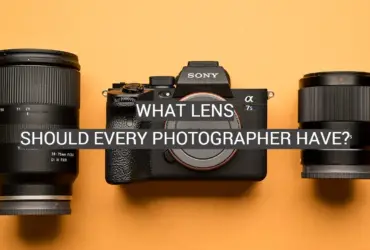



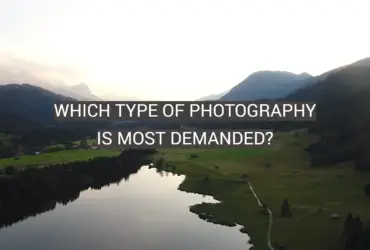
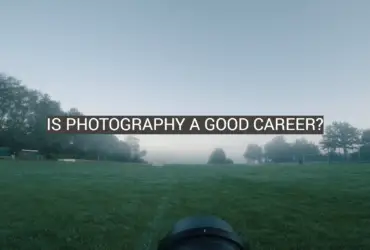
In my experience, I have found that the hour right before sunset produces some of the most beautiful and scenic photos. The light is softer and gives a warm glow to the images, while the sky is lit up with a range of colors. This hour can be unpredictable, so it’s always worth checking the weather forecast beforehand to see if there is a good chance of capturing some amazing photos during this time.
There is no definitive answer as to when the best time to take outdoor photos is. However, I have found that the early morning and late evening hours produce the most pleasing results. During these times, the light is softer and provides a more natural look to the photos. Additionally, there is usually less of a crowd at these times, so you can have more of the scene to yourself.
I love taking pictures outside in the summertime! The best time of day to do this is definitely in the late afternoon or early evening. The light is so beautiful and golden at that time of day, and it makes for some really stunning photos. I’ve captured some amazing memories this way, and I definitely recommend giving it a try if you haven’t already!
I find that the best time of day to take pictures outside is early in the morning or late in the day. During these times, the sun casts a beautiful golden light that makes photos look more stunning. I’ve also found that there tends to be less people out and about during these times, so it’s easier to get those perfect shots without anyone in the way.
There is no definitive answer as to the best time of day to take pictures outdoors – it all depends on the type of photo you want to take and the environment you’re shooting in. However, for portraits, the golden hour – that time shortly after sunrise or before sunset when the light is soft and warm – is often cited as the ideal time.
I remember a couple of years ago, I went to a park near my house to take some portraits of my niece and nephew. I had planned to shoot in the late morning, but when I got there, I found that the light was too harsh. The sun was up high in the sky and was casting harsh shadows on their faces. So I decided to wait until later in the day, when the sun was lower in the sky and the light was softer. And I’m glad I did – when I returned to the park later in the day, the light was perfect! The photos came out beautifully.
If you’re looking to take portraits outdoors, try shooting during the golden hour for the most flattering light.
I love taking pictures outside, especially in the summertime. The best time of day to take pictures outside is early in the morning or late in the evening when the sun is setting. The light is so beautiful and soft, and it creates such a romantic atmosphere.
I remember one particular summer evening I was out taking pictures with my husband. The sun was setting and the light was so gorgeous. We were wandering around a park near our house, and we came across a beautiful fountain. We took some pictures there, and it was such a special moment. We were surrounded by the beauty of nature, and we felt so happy and in love. I cherish those memories, and I’m so glad I have those photographs to remind me of that wonderful evening.
I love taking pictures outdoors, but I’ve always been unsure of what the best time of day to do it is. I’ve tried photographing in the morning, afternoon, and evening, and I’ve found that each has its own benefits and drawbacks.
In the morning, the light is generally softer and more diffused than it is later in the day. This can be great for capturing landscapes or portraits with a soft, dreamy look. However, the downside to shooting in the morning is that there isn’t as much daylight available, so you may not have enough time to get all the shots you want.
In the afternoon, the light is harsher but also more directional. This can be great for capturing images with strong contrast and dramatic lighting effects. However, you need to be careful not to overexpose your photos in this type of lighting.
In the evening, the light is again softer and more diffused than it is during the afternoon. This can be great for capturing atmospheric shots with beautiful golden tones. However, you need to be careful not to let too much light into your camera’s lens, as this can cause photos to be overexposed.
So what’s the best time of day to take pictures outdoors? It really depends on what type of photo you want to capture and what effect you’re trying to achieve. Personally, I find that evening light provides the perfect mix of beauty and flexibility, so that’s usually when I try to shoot outdoors.
I find that the best time of day to take outdoor portraits is in the late afternoon. The sun is starting to set, so the light is a beautiful golden color and it’s not too harsh. This is when I usually take my family portraits. My kids love running around in the park and playing on the swings, and it’s a great time to capture their laughter and smiles.
The best time of day to take pictures outside in summer is definitely early in the morning. The light is just so beautiful and golden, and it’s not as hot as it is later in the day. I love getting up early and taking a walk around my neighborhood, taking photos of all the beautiful homes and gardens. It’s such a peaceful time of day and the perfect way to start the morning.
The best time of day to take pictures outside in the fall is early in the morning. The light is soft and golden, and the air is usually cool and crisp. This is the time of day when the leaves are at their most colorful, and the scenery is at its most beautiful. I love to get up early on a fall morning and go for a walk through the woods, taking pictures of the changing leaves as I go. The peace and quiet of the early morning is a perfect backdrop for taking nature photos.
I have always been fascinated by photography and the art of capturing a moment in time. There is something so special about being able to look back at a photo and relive a memory. I am by no means an expert photographer, but I have learned a few things about taking pictures outdoors that I thought I would share.
In my opinion, the best time of day to take pictures outside is early in the morning or late in the afternoon. This is when the light is the most beautiful and provides the perfect setting for photos. The sky is usually a beautiful shade of blue, and the sun creates a warm and inviting glow.
I have taken many pictures during these times of day, and I have always been happy with the results. I encourage you to give it a try yourself!
I have a love/hate relationship with photography. I love stepping back and seeing the world through a viewfinder, but I hate how picky I am about my photos. I always think I could have gotten the shot if I had been there just five minutes earlier or later.
But despite my perfectionism, there is one time of day that I always love taking pictures: early morning. The sky is still dark, but the stars are fading and the first light of the sun is starting to peek over the horizon. Everything is so quiet and calm, and the light is so beautiful. It’s definitely my favorite time of day to take photos!